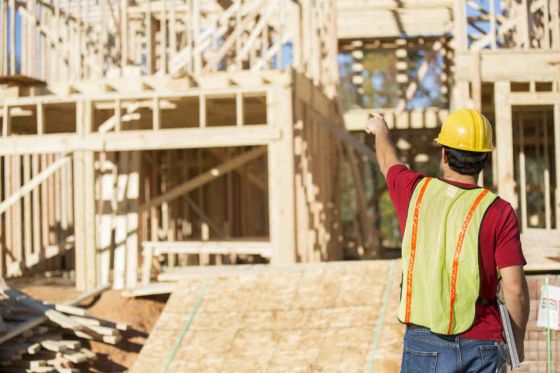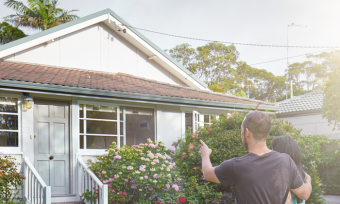
Pros: You know what you’re getting
Buying an established home means you know what you’re getting in three keys ways.
First, the potential defects of an established home are often visible, or show up in the pre-purchase building inspection to give you a warning about what you’ll face once you move in. You can’t do a pre-purchase building inspection if you build, so you don’t know what problems might be caused down the track a few months by your builder taking a few shortcuts to get the project done on time.
Secondly, buying an established home usually means buying into an established neighbourhood. If you need to know that public transport, good schools, or essentials like cafes are nearby, it can be difficult to find such an area that still has vacant land on which to build.
Finally, established homes are said to have character, whereas new homes can have the “cookie cutter” feel, especially in new estates.
Compare home loans with Canstar
Pros: A smaller deposit may be required
You may need a higher deposit to get a Construction Loan to build a home from scratch, than you may need to buy an existing home. We’ve written all about how your deposit can affect your interest rates and the overall cost of your loan here.
Pros: It may be closer to the city centre
In general, you can’t find vacant land close to the city to buy, as all the land is already occupied. So if living close to the CBD is important to you, an established home is more likely to be available as an option.
Being closer to the city centre will also mean that an established home is more likely to provide facilities and infrastructure such as public transport, schools, and job opportunities. Thinking about your commute time to get to and from work and school may be an important consideration if you haven’t lived in the outer ‘burbs with a long commute before.
Established homes often come on a larger parcel of land than what is offered by developers for new builds. This can mean that if used as an investment, the value of the property grows faster than a new build, in spite of the fact that the home itself is older.
On the other hand, building a home in an outlying suburb doesn’t mean it has no investment value. As the area grows, more homes and infrastructure go up around them (things like public transport, shopping, schools, and parks), meaning house values will rise.
Compare home loans with Canstar
Pros and cons of building a house from scratch
These days, there are two main ways to build a house: buying off the plan, where everything is mostly designed already and you simply have to choose your inclusions; or having an architect design your own home from scratch.
Pros: Time it right and it might be cheaper
Developers have a quota of properties they need to sell off the plan in order to meet their finance and begin construction. This means you may be able to find lower prices on offer if you get in early in the first stage of sales. Of course, buying off the plan has many risks and you should be aware of those risks before making any decisions.
Pros: You can build it how you like (reality permitting)
A large number of potential buyers end up building instead because they do not find anything currently on the market that suits what they want or need. Even if it looks like it may be cheaper to buy an existing property, potential buyers or builders must consider how much money they would need to spend on renovations to make it “just right” for their household.
Pros: Typically more energy-efficient and environmentally-friendly
New homes are made from brand new materials and come fitted out with new appliances, and so they tend to be more energy-efficient, saving you money and saving the planet in the long run.
Building your house right can make it cooler in summer (and warmer in winter) without spending more on your energy bill “passive design” techniques that take advantage of the sun, shade from trees, cooling breezes, insulation, and energy-efficient glazing.
Cons: Building takes time, and lenders don’t like that
When you build it takes time, and a certain number of delays due to bad weather are practically guaranteed.
Many home loan lenders restrict borrowers by requiring that the house must be completed or at least begun within a certain timeframe of settlement. If a borrower is unable to meet time restrictions, they should contact their lender for an extension.
Cons: You can’t usually move in right away
Borrowers need to factor in how much it will cost them to live somewhere else while they build. Even if you can move in straight away during construction, you are guaranteed to be surrounded by the chaos of construction until it is completed. When moving into a new estate, home builders may find that if their home is completed early and the other homes around them are still going up, they can expect ongoing construction noise and dust in the air.
Cons: Land costs money
In most capital cities around New Zealand, land costs a fine premium, especially with the demand so high! Even if the actual house build is not terribly expensive, you may have to pick your area carefully when choosing a block of land.
Cons: The cost is not fixed
When building, costs can spiral out of control if you aren’t carefully monitoring what is being spent and where. With some builders, the fee does not include everything you thought it would – driveways or light fittings might cost extra, for example. Check your builder’s contract carefully for all the inclusions you need.
When buying off the plan, buyers should be careful to ask a lot of questions about the display home shown to them. You don’t want to find out that the expensive tiles and light fittings used in the display are not included as standard, but rather cheaper versions that aren’t as good.
Any modifications to the plan made mid-way are likewise usually expensive. Changes made midway through construction can incur additional costs such as:
- Drafting fees from the architect, builder, or engineer
- Penalty fees from the builder
- Legal fees to alter the contract
- Extra materials
- Extra labour
Cons: Progress fees on construction loans
Construction loans involve progressive payments as you build, so be sure to check the fee structure of the payment schedule for any loan before signing up. Some lenders charge a fee to process each payment, while other lenders only charge a one-off fee.
Cons: More paperwork is required for a construction loan
When you apply for a home loan to buy an established home, the paperwork required is mainly just your income payslips, your latest statements for savings in bank accounts and debt on credit cards, and KiwiSaver details if you are using those savings towards a deposit. Construction loans require more than this; you also need to provide copies of construction-related things including building permits, building contracts, building plans, and building insurance. Your lender also needs to know along the way about any changes to the building plans, costs, or contracts.
Compare home loans with Canstar
Want more finance tips?

Sign up for free to receive more news and guides, straight to your inbox.
By subscribing you agree to the Canstar Privacy Policy






Share this article